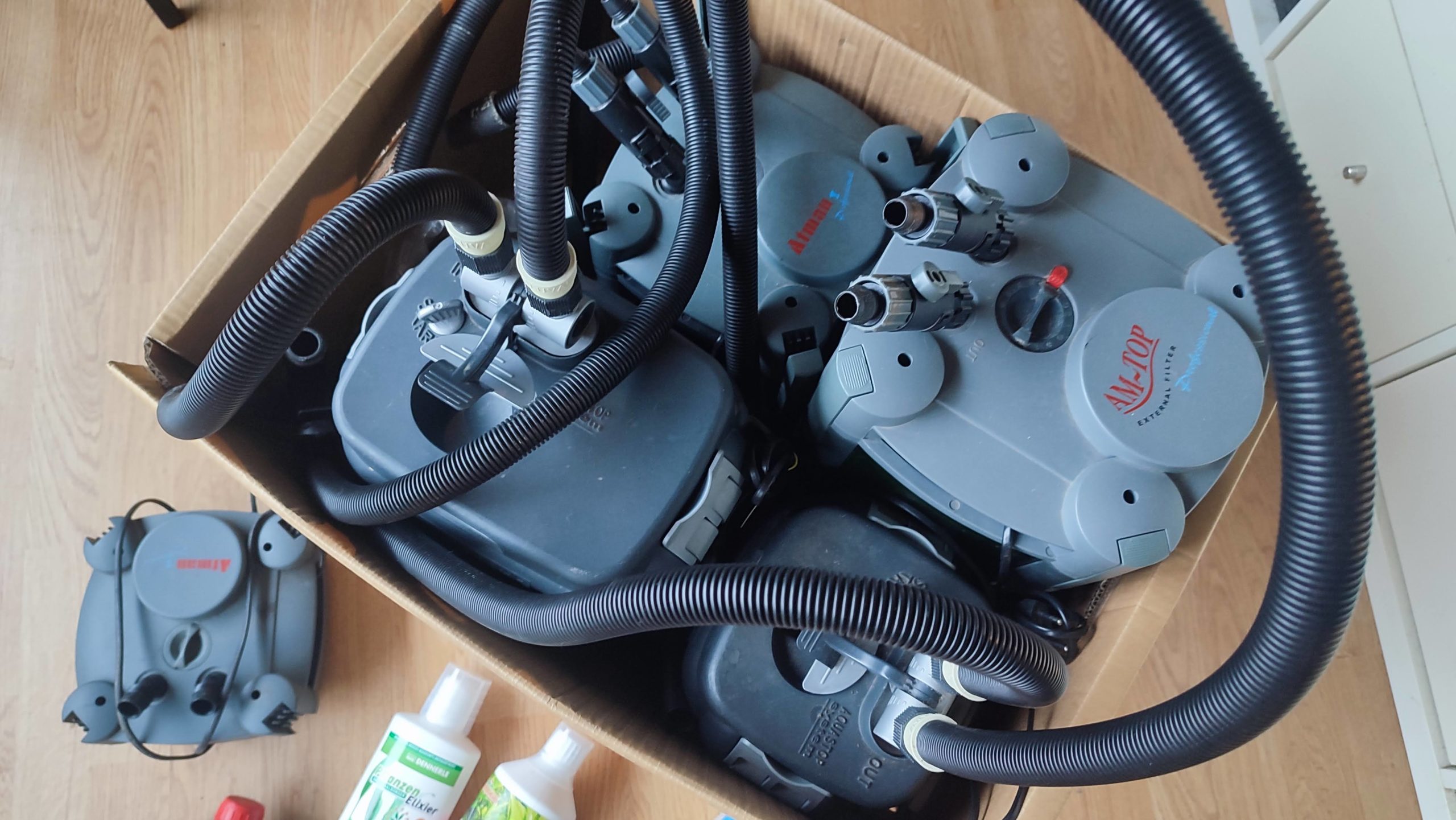I must admit, that I am hooked on filtration. I really love messing with them and building my own setups. A year ago, I made a filter using a PVC rain gutter filled with bio filter media. Although it worked well, it could be better. So I made an even better filter, using 9(!) PCV sewer pipes! That worked much better and did a great job at breaking down ammonia and nitrites, but was ugly to look at, messy and difficult to clean.
Although I have used different techniques to improve the filtration, as well as get the most out of the pumps, without limiting their flow rate, what I have learned are three things
- Allow gravity to do as much work as possible
- Give the filters time
- Use multiple or modular filters
It is this last point, that I want to talk about here, because I think that it is very important to see filtration as whole instead of simply volume per hour.
3 x volume pr hour
Throughout my fish keeping, I have come to learn that the golden standard in filtration, is 3 times the tank volume every hour. This means that the water of the whole tank should go through the filter 3 times each hour. This though is a fake safety. It can be enough, but sometimes less can also be enough. Often more is needed though. The main function of filters, is to break down ammonia into nitrites and nitrites into nitrates. If your filter can’t keep up with this, then it is not enough. It is either too small or not good enough. Ammonia and nitrites should be 0 in an established tank. They are the most toxic stages of fish waste, and need to be broken down to nitrates, as fast as possible in order for them to not damage your fish.
In the end, this is what matters. Not how many times the tank volume is treated, but how well it is treated.
A good filter
Personally I don’t focus too much on water flow but in quality. There are several things that tick my list, but one of them is a good pre-filter that does not get clogged too fast, and will keep solid waste away from my bio filter media. After the water goes though a rough mechanical sponge filter, I want it to go through a finer filter media. This is usually the white fluffy type of fiber, that will catch any smaller particles. The water that comes through there, should now be just water with no solid waste. This, I want to go through biological filtration. Here I use ceramic rings, that have a huge surface for beneficial bacteria to grow on. These are the main stages of filtration that I want my filters to have. I have recently started experimenting with Activated coal, and Phosguard resins in order to remove some particular minerals that come with my tap water, but this is more a specialized case to counter some issues that I have with our water company.
This should give an overall good filtration. But size does matter!
Multiple smaller filters
Although a larger filter is often enough to filter the water, and break down ammonia and nitrites, I prefer to use multiple smaller filters to achieve the same result. One large filter definitely has advantages, such as the simplicity of only one single filter to clean, easier to hide in the tank. The advantages of smaller filters is much greater though
- Clean them at different intervals in order to not affect the culture of the beneficial bacteria. This results in more stable parameters even when doing filter maintenance.
- If one filter breaks down, the aquarium can continue to run without being heavily affected.
- Much faster to set up quarantine tanks or extra tanks, as you simply can move a filter over to the new tank
- Much better water circulation as you can direct the flow at different directions through the tank
For me, many smaller filters work really well. That said, I still over filtrate my tanks, especially because goldfish are very messy and need strong filtration to cope with their mess


Leave a Reply